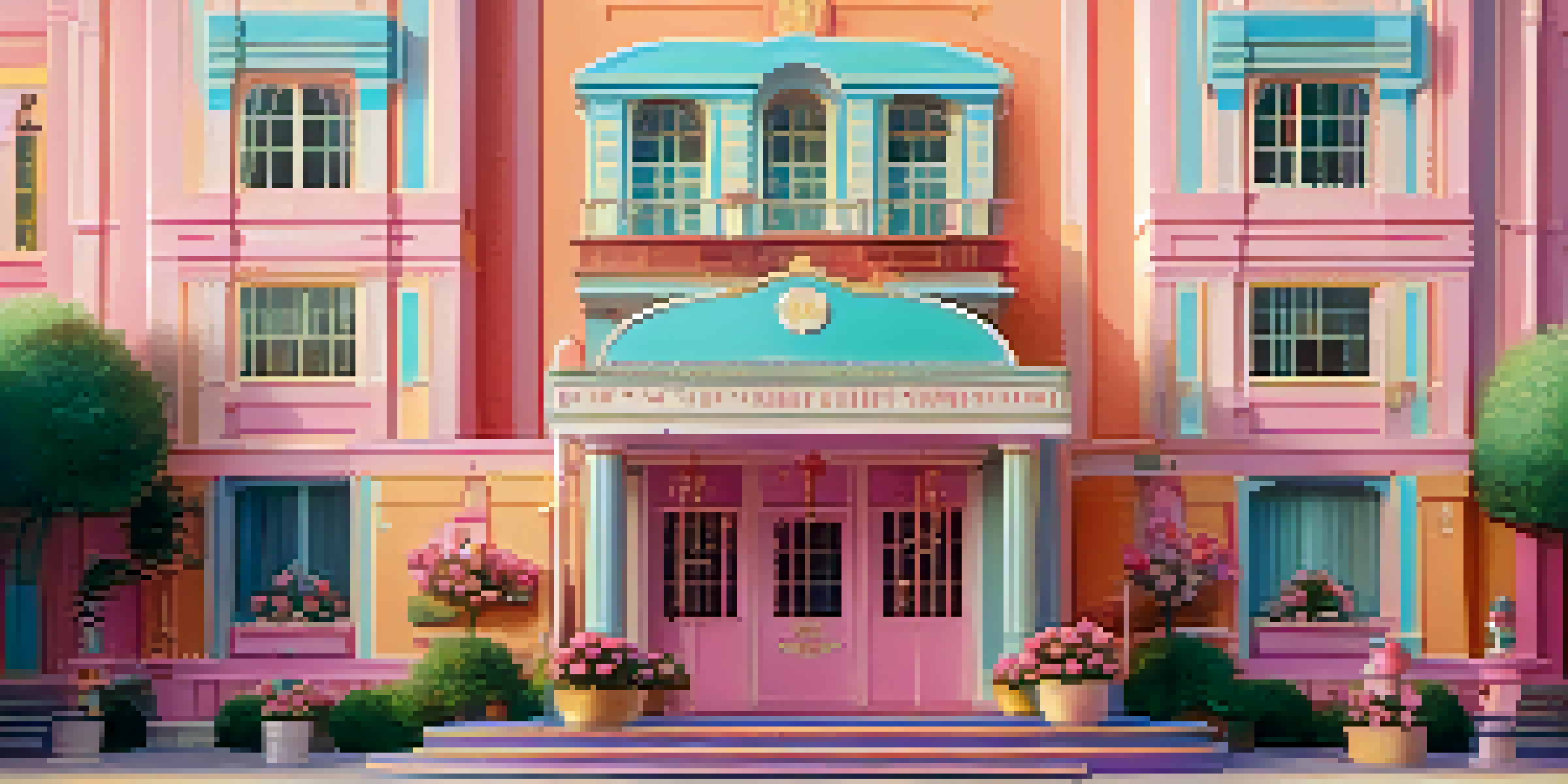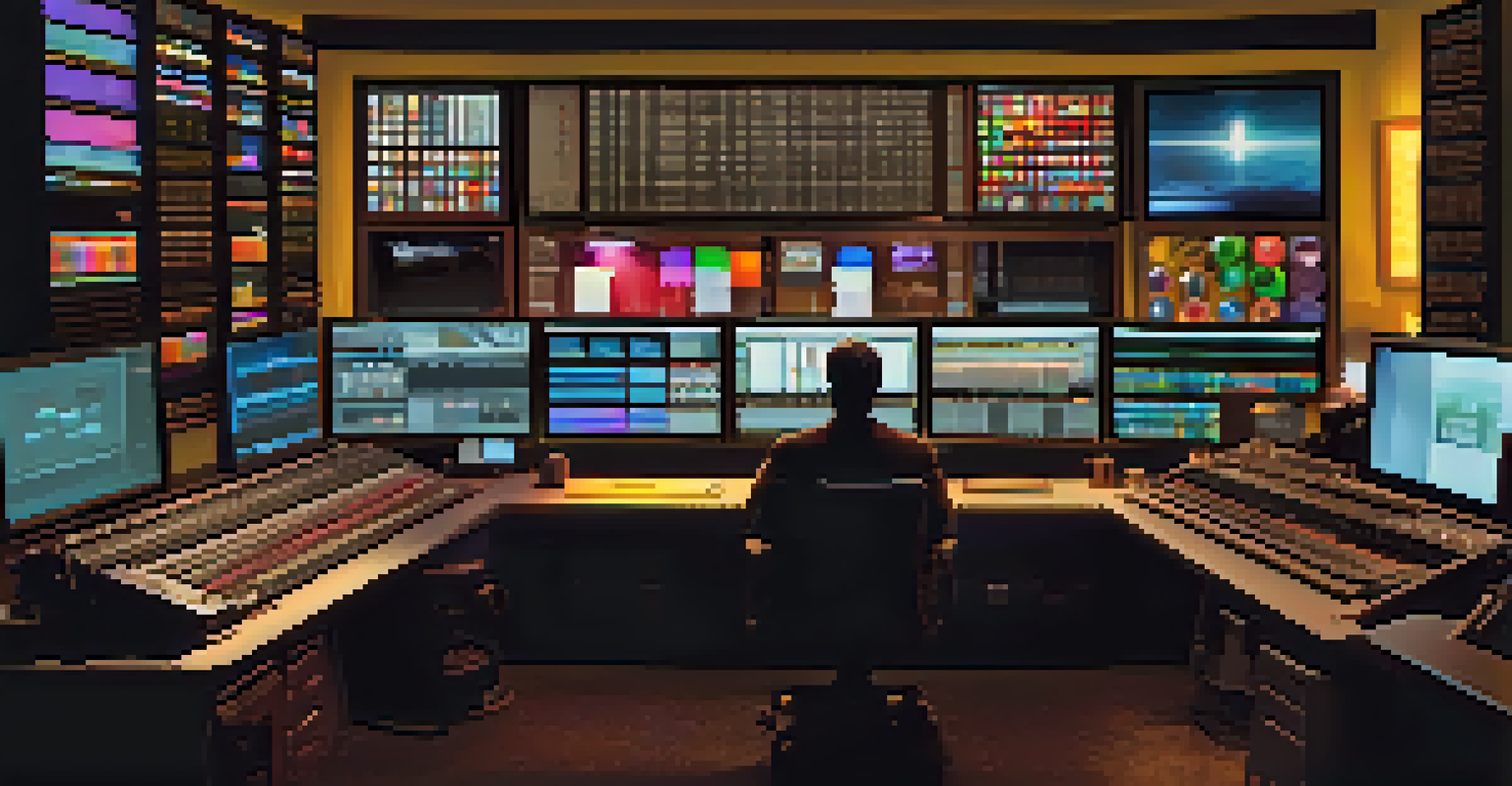The Director's Influence on Cinematography and Style

Understanding the Director's Vision in Film
Every great film begins with a vision, and it's the director who dreams it up. Their unique perspective guides every aspect of filmmaking, from the script to the final cut. This vision not only shapes the narrative but also influences how the story is visually told. A director's vision is like a compass, ensuring that the film remains true to its intended message and emotional impact.
A film is never really good unless the camera is an eye in the head of a poet.
For instance, consider how directors like Wes Anderson use symmetry and vibrant color palettes to create a whimsical world. His films are instantly recognizable due to this distinct style, which reflects his personal vision. This level of influence underscores the importance of the director in shaping both the story and the visual narrative.
In essence, a director's vision serves as the foundation of a film's identity, merging storytelling with visual artistry to create a cohesive experience.
Cinematography: The Director's Visual Language
Cinematography is the art of capturing a film's visuals, and it greatly depends on the director's choices. The director collaborates closely with the cinematographer to choose camera angles, lighting, and shot composition that align with their vision. This partnership is crucial in translating the script into a visual language that resonates with the audience.

For example, the use of close-ups can evoke intimacy, while wide shots can establish a sense of scale or isolation. Directors like Christopher Nolan often employ specific techniques—like non-linear storytelling and intricate camera movements—to create a unique visual experience. These choices not only enhance the narrative but also evoke specific emotions in viewers.
Directors Shape Film Identity
A director's vision serves as the foundation of a film's identity, merging storytelling with visual artistry.
Ultimately, the director's influence on cinematography is about crafting a visual experience that amplifies the story, making every frame a deliberate choice in the filmmaking process.
The Role of Color in Cinematic Style
Color is a powerful tool in filmmaking, and directors use it to evoke moods, highlight themes, and guide viewer emotions. The choice of color palette can be as distinctive as the director's style itself. For instance, in his films, Guillermo del Toro often employs rich, saturated colors to create fantastical worlds that draw the audience in.
The director is the one who makes the film possible; without him, there is no film.
Directors like Sofia Coppola have also mastered the use of color to convey themes of isolation and nostalgia. By using soft pastel hues, she creates a dreamy aesthetic that complements her storytelling. Each director’s approach to color can significantly alter the audience's perception and emotional response to a film.
Thus, color becomes an extension of the director's voice, shaping the overall cinematic style while reinforcing the film's emotional core.
Editing: The Director's Final Touch
Editing is where the magic truly happens, and a director's influence is paramount in this process. They guide the pacing, rhythm, and structure of a film, determining how scenes flow and interact with one another. Directors often collaborate closely with editors to ensure that the final product aligns with their original vision.
For instance, in films like 'Birdman,' director Alejandro González Iñárritu utilized seamless editing to create the illusion of a single continuous shot. This not only enhanced the film's storytelling but also immersed viewers in the experience. Such innovative editing techniques showcase how directors can manipulate time and space to craft a powerful narrative.
Cinematography Reflects Vision
The collaboration between directors and cinematographers creates a visual language that enhances the emotional impact of the narrative.
In summary, the editing process is where a director's vision comes to life, transforming raw footage into a polished and cohesive film that reflects their unique style.
Directorial Style: Influencing Genre and Trends
A director's style often defines not only their filmography but also influences entire genres and trends in the industry. Iconic directors like Quentin Tarantino are known for their distinctive storytelling techniques and stylistic choices, which have inspired countless filmmakers. Tarantino's blend of non-linear narratives and sharp dialogue has left a lasting mark on modern cinema.
Moreover, directors can challenge conventions within genres, pushing boundaries and redefining audience expectations. For example, Jordan Peele’s work in the horror genre, particularly in 'Get Out,' introduces social commentary that elevates the material beyond traditional scares. His unique approach has sparked new conversations about representation and themes in film.
In essence, a director’s influence can ripple through cinema, inspiring both audiences and fellow filmmakers to explore new creative possibilities.
Directors and Their Signature Techniques
Many directors develop signature techniques that become synonymous with their work. These can include specific camera movements, editing styles, or thematic motifs that recur across their films. For instance, Martin Scorsese is known for his dynamic use of tracking shots and voice-over narration, which adds depth to his storytelling.
Directors like Hayao Miyazaki bring a distinct visual flair to animation, often incorporating lush landscapes and fantastical elements that captivate audiences of all ages. His unique storytelling style blends whimsy with profound themes, creating a memorable cinematic experience. These signature techniques help establish a director's brand and make their films instantly recognizable.
Collaborative Process in Filmmaking
Filmmaking is a team effort where directors work closely with various artists to bring their unique vision to life.
Ultimately, these creative choices not only enhance the storytelling but also enrich the viewer's experience, making each film a work of art.
The Collaborative Nature of Directing
While a director's influence is significant, filmmaking is inherently collaborative. Directors work with a team of talented individuals, including cinematographers, production designers, and actors, to bring their vision to life. This teamwork is crucial for achieving the desired aesthetic and emotional impact of a film.
For instance, the collaboration between director Tim Burton and production designer Rick Heinrichs has resulted in iconic films that showcase Burton's whimsical, gothic style. Together, they create immersive worlds that enhance the storytelling and leave a lasting impression on viewers. Such partnerships illustrate how directors rely on the strengths of their collaborators to realize their vision.

In conclusion, the collaborative nature of directing highlights the importance of teamwork in filmmaking, where each individual's contribution shapes the final product.
The Lasting Impact of Directors on Cinema
The influence of directors extends far beyond individual films; it shapes the landscape of cinema itself. Their unique styles and storytelling approaches can inspire future generations of filmmakers, impacting how stories are told on screen. Directors often leave behind a legacy that continues to resonate within the industry, influencing trends and genres.
For example, Alfred Hitchcock's mastery of suspense has set the standard for thrillers, inspiring countless films that follow in his footsteps. Similarly, directors like Spike Lee have brought important social issues to the forefront, using their platform to spark conversations and drive change. Their contributions not only entertain but also encourage audiences to reflect on broader themes.
Ultimately, directors are the architects of cinematic storytelling, and their lasting impact on cinema is a testament to their creativity and vision.